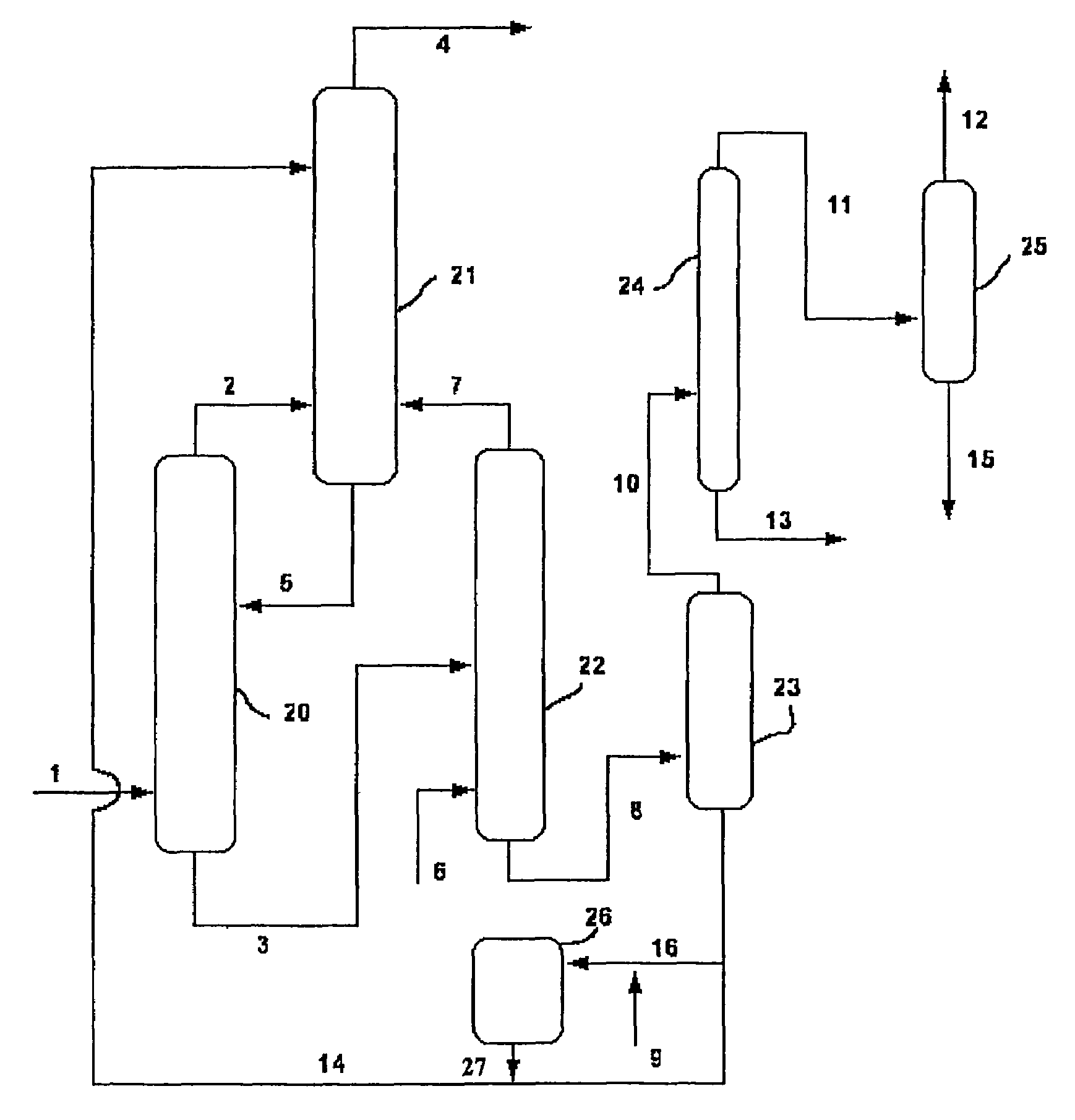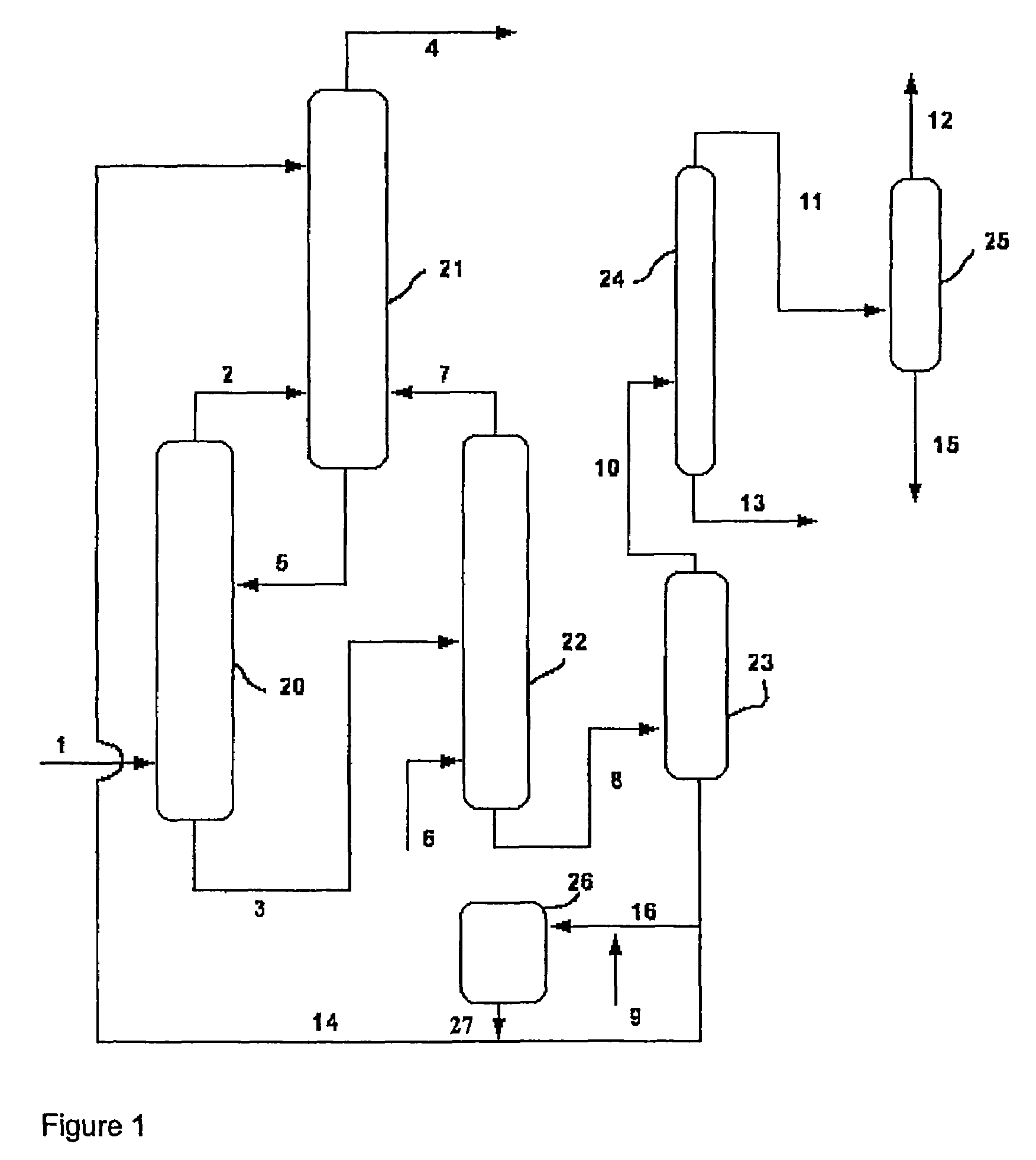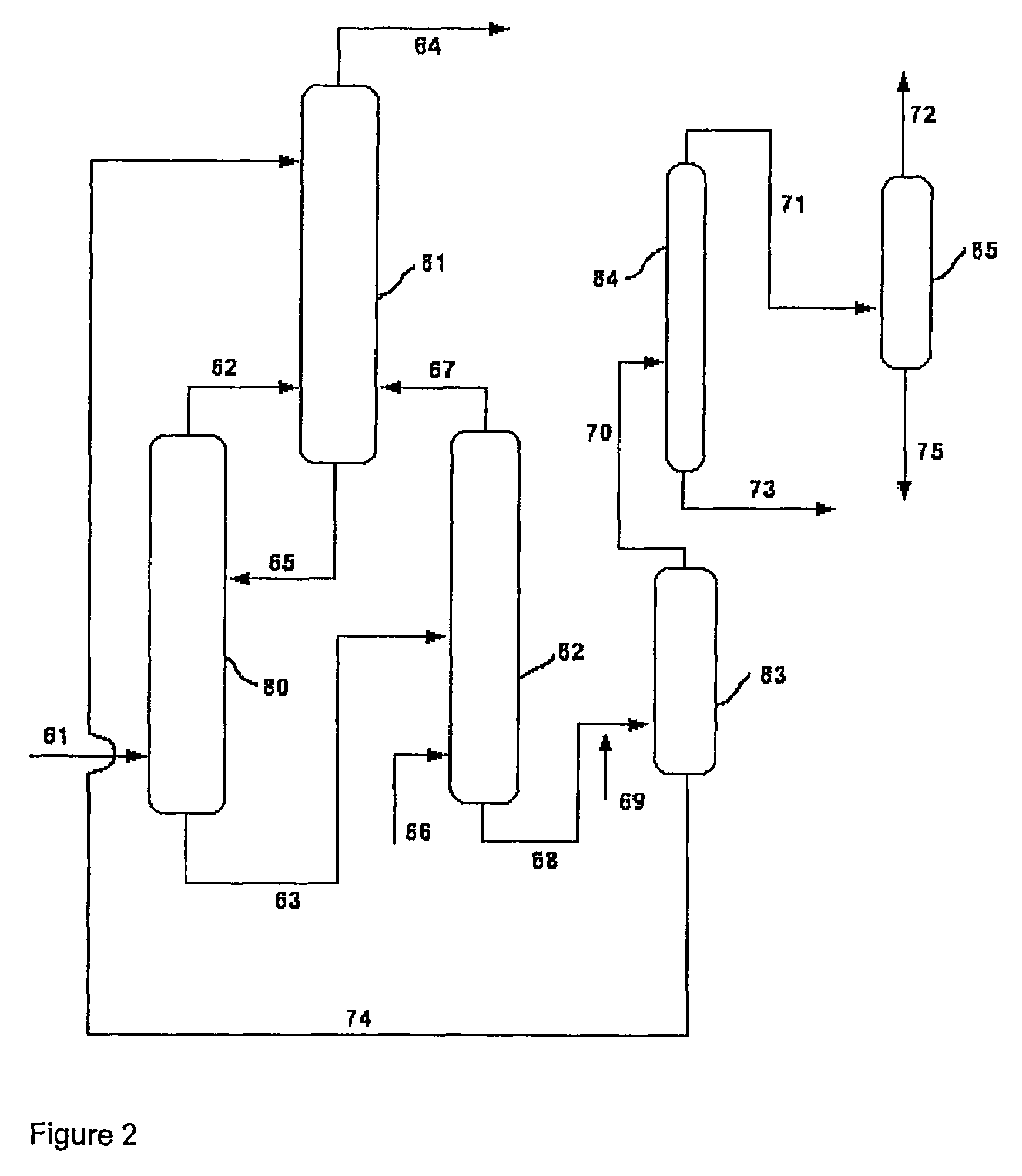Process for recovery and recycle of ammonia from a vapor stream
a technology of vapor stream and ammonia, which is applied in the direction of moving filter element filters, separation processes, filtration separation, etc., can solve the problems of increasing the burden of waste disposal and high cost of wet oxidation, so as to improve the recovery of ammonia, reduce the level of contaminants, and reduce raw material costs
- Summary
- Abstract
- Description
- Claims
- Application Information
AI Technical Summary
Benefits of technology
Problems solved by technology
Method used
Image
Examples
example 1
[0067]The effluent from a bench-scale, fluid-bed ammoxidation reactor comprising a propane ammoxidation catalyst continuously fed with propane, ammonia, oxygen and nitrogen and running at a steady-state condition is fed to a bench-scale, two-stage, spray phosphate quench unit. The quench unit comprises two quench towers, each independently fitted with a phosphate recirculation system including a reservoir containing aqueous ammonium phosphate. The first or stage-one quench tower includes four spray nozzles disposed vertically in the vessel and pointed downward; the second or stage-two quench tower includes one spray nozzle near the top of the vessel, pointed downward.
[0068]The aqueous ammonium phosphate in the first-stage reservoir is maintained at a pH 6, and a temperature of 60° C.; the aqueous ammonium phosphate in the second stage reservoir is maintained at pH 4, and a temperature of 60° C.
[0069]The hot reactor effluent is fed to the stage-one quench tower near the bottom, flowi...
control example 1
[0071]The quench process is employed substantially as described in Example 1, but using only the first-stage of the two-stage quench unit. The reactor effluent exiting the tower at the top is collected and sampled for analysis.
[0072]The concentration of ammonia in a sample of the reactor effluent exiting the first-stage quench tower is determined to be 4.5% of the concentration in the reactor effluent. In a subsequent sample, the concentration of ammonia is determined to be 5.5% of the concentration in the reactor effluent.
[0073]It will thus be apparent that the two-stage quench is substantially more effective than a single-stage process in capturing ammonia from the process stream.
[0074]The following Examples 2-4 are provided to demonstrate the use of solvent extraction for removal of organic components from aqueous quench bottoms.
example 2
[0075]A 50 cc sample of stripped aqueous quench bottoms with 27% total dissolved solids and pH 6, taken from the stripper of a pilot-scale propane ammoxidation process carried out substantially as described in U.S. Pat. No. 5,994,299, is extracted with 10 cc of acetonitrile in a separatory funnel. After settling, the upper organic phase is found to contain 51% of the organic components originally present in the stripped aqueous quench bottoms, determined by total carbon content analysis.
PUM
| Property | Measurement | Unit |
|---|---|---|
| temperature | aaaaa | aaaaa |
| temperature | aaaaa | aaaaa |
| temperature | aaaaa | aaaaa |
Abstract
Description
Claims
Application Information
 Login to View More
Login to View More - R&D
- Intellectual Property
- Life Sciences
- Materials
- Tech Scout
- Unparalleled Data Quality
- Higher Quality Content
- 60% Fewer Hallucinations
Browse by: Latest US Patents, China's latest patents, Technical Efficacy Thesaurus, Application Domain, Technology Topic, Popular Technical Reports.
© 2025 PatSnap. All rights reserved.Legal|Privacy policy|Modern Slavery Act Transparency Statement|Sitemap|About US| Contact US: help@patsnap.com



